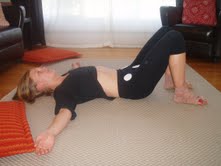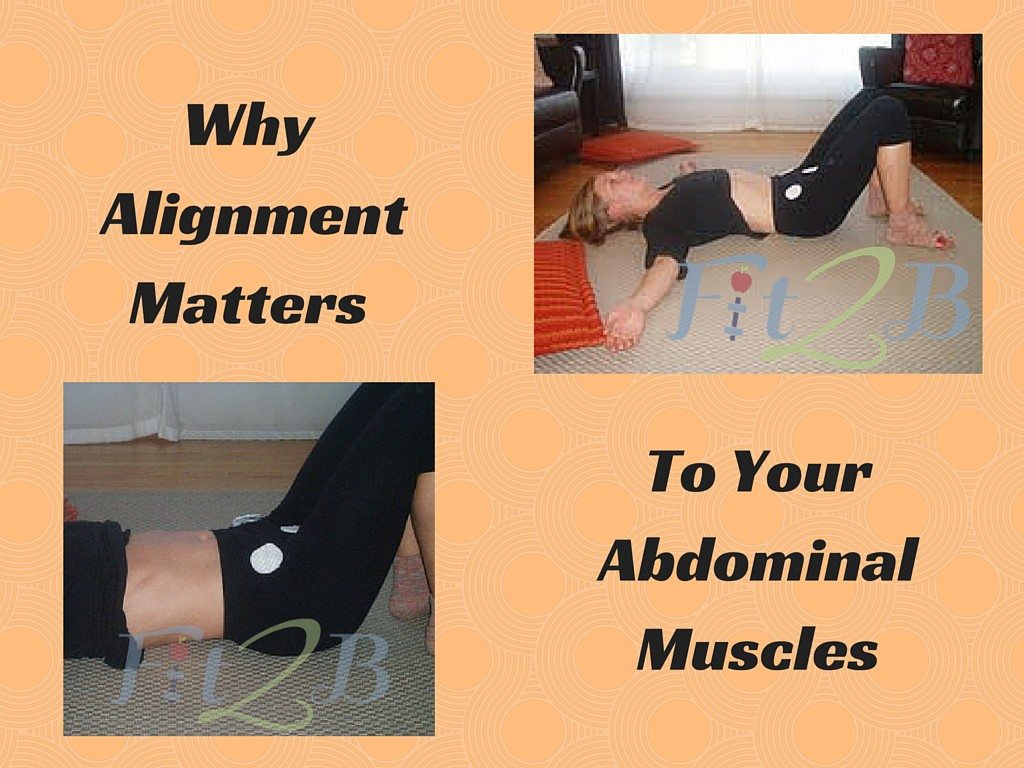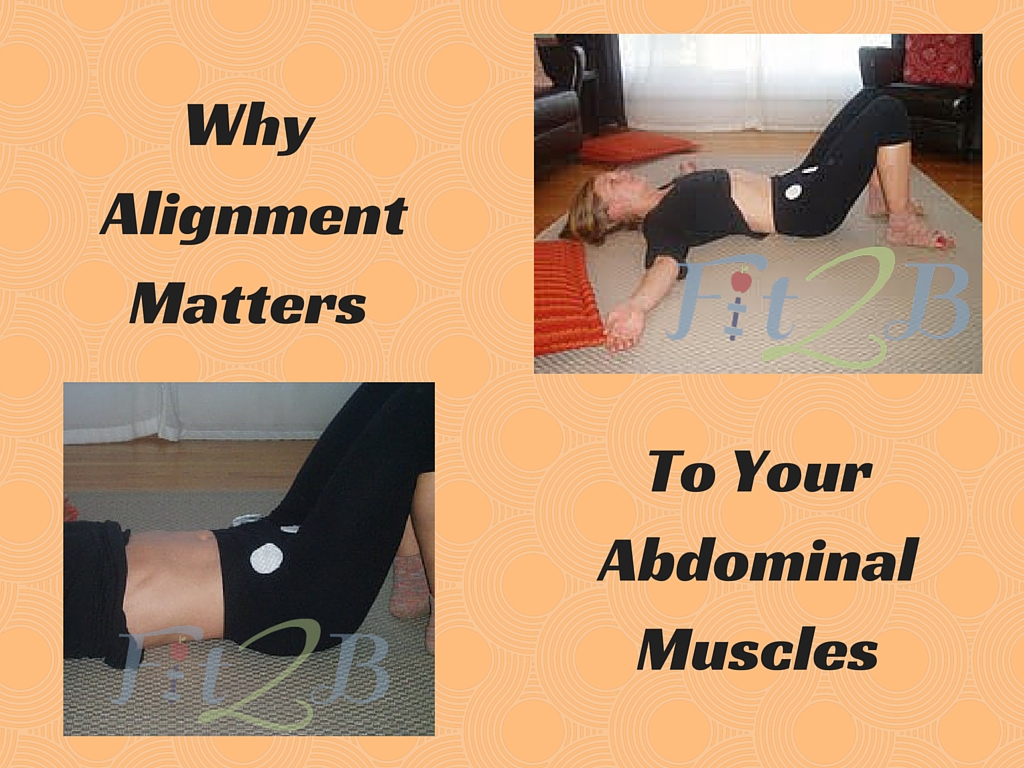Blog
Why Alignment Matters to Your Abdominal Muscles
We’d like to welcome Susanne Reinhold from Kangaroo Fitness who is a fitness instructor and personal trainer working with the pre/postnatal population. Susanne has a special interest in the abdominal muscles given that the belly is the number one concern for most new moms. Learning more about the core has taken on a new level of excitement for her since she started taking biomechanist Katy Bowman’s Whole Body Alignment course at the Restorative Exercise Institute. Fit2B follows Katy’s work closely, and Susanne is listed in our Diastasis Directory of Experts, so we are blessed to have Susanne write…
The exciting part about Whole Body Alignment is that during the 4+ hours of covering the core, I didn’t learn a bunch of abdominal exercises, but instead I began to understand the relationship between functioning or non-functioning abdominal muscles and the alignment of the bones to which the abdominal muscles attach to – the rib cage and the pelvis – and how therefore alignment work can rehab broken abdominals. So if your abdominal muscles are split in the middle (diastasis recti)or you’re *just* wider in the waist than in the hips, it’s worth having a look at how you carry your pelvis and rib cage through space .
Neutral Alignment of Pelvis
When sitting or standing the neutral position for the pelvis is when the ASIS is in a vertical line over the pubic bone. In the following photos, my belly is relaxed; I am not sucking it in, nor am I consciously contracting my TvA by pulling it towards the spine. What you see is how my abdominal muscles respond to a change in alignment! So try this… scroll down a bit…
What you see up there is my hyper kyphosis which is exposed now that I align my rib cage with my pelvis. You can’t see this but I could feel my abdominal muscles turn on immediately. While my personal hyper kyphosis is another issue altogether, that photo just shows you how much I need to round my upper back to get my ribs down. How about you?
Diastasis recti and a bit of anatomy
All of the abdominal muscles (rectus abdominis, internal and external obliques and transversus abdominis) attach to the pelvis and rib cage. The deepest layer, the transversus abdominis, also attaches to the spine. They all ultimately attach to strings of connective tissue (linea alba and 2 linea semilunaris) in front of our abdomen. Katy Bowman refers to it as 3 abdominal raphe with raphe just meaning “seam.”
Now , if the muscles didn’t connect to this collagen-containing seam in front but to a nice long bone instead, we would all have toned abs but it would also make living our life and growing a new life much more complicated.
So we were equipped with this raphe [seams] which, IF held in the right position and under the right amount of tension, can be as strong as bone and can thus be a solid attachment point for the abdominal muscles.
When there is a gap between the muscle (diastasis recti) it means that the raphe isn’t bone-like anymore because it has lost its shape and therefore its tensile strength. It is no longer under the right amount of tension to offer the abdominal muscles a solid attachment point from which to move and generate force.
The raphe [seams] attach to the sternum and the pelvis which is why the position of the rib cage and pelvis really matters when it comes to the tensile strength of this funky part of our body. When the attachment points of any muscle are in the right place, the muscle gets to be at its intended length and with regular use can develop its intended strength. Now, I’ll show you how I look when I lie on my back and how my abs respond to some alignment changes. Look at my pelvis in this following picture. The white dots show you where my ribs and ASIS and pubic bone are…

In this next photo I’ve actually lifted my head and shoulders off the floor to lower my rib cage down so it can be in line with my neutral pelvis. My pubic bone and ASIS are also now in a horizontal line. This is a killer move not to be mistaken with a crunch. All my abdominal muscles are switched on.

The best part – aligning my rib cage
Do you remember how my ribs were sticking out in the first picture of me on the floor? The ribs should be flush with the abdomen so that the lowest real rib is in line with the ASIS and pubic bone. When you do it at home, you can tell right away if your rib cage is too far forward by
a) seeing your ribs sticking out,
b) being able to kind of slip your fingers under your ribs or
c) your bra line – or where your bra line would be – is not touching the floor.
If you are doing leg lifts or leg slides from here, bolster your head and shoulders so that your bra line is connected with the floor. Like me in the next photo.

You definitely don’t want to look like the following picture when you get ready to do abdominal exercises or when you are lying on the floor for other reasons. This is far far far away from a neutral pelvis. This is a tucked or posterially tilted pelvis. You can see how my pubic bone white spot is higher than my ASIS.

But even when you are in neutral pelvis, you can get the bread-loaf bulge. So watch your body. What you see is the recti muscle taking over. If you have diastasis recti, your belly would kind of make a tent-shape appearance which you want to AVOID and do more of the basic TvA contraction exercises and stretches and releases before moving on to the more advanced stuff. Read this article to learn why sucking it in doesn’t help either.
Final note: Much much more important than doing a bunch of abdominal exercises every day, is to start noticing where you carry your rib cage and pelvis when you stand, sit and walk around and to correct it into neutral. And to do more standing and walking than sitting. And to learn the difference between sucking in vs. properly con your belly muscles.
More Recommended Links:
http://www.alignedandwell.com/katysays/rua-rib-thruster/
http://www.alignedandwell.com/katysays/neutral-pelvis/
http://www.alignedandwell.com/katysays/side-effects/




Hello Beth…
Truly informative article!!
I wanted to ask…
Can we contract the core (TVA, pelvic floor, Multifidus etc.)during any exercise?
I m not talking about sucking in or bracing …just keeping the core muscles activated around about 30%.
Is it okay to keep core muscles active (30% only) during any exercise or should I just relax them entirely throughout the workout session??
Excellent question! That is very close the same cue I use during several Fit2B workout videos when we are doing faster motions. The core is very responsive and can multi-task a lot at once. It’s all about using various strategies to integrate the transverse as needed. In dysfunctional cores, we have to consciously tap the transverse on its proverbial shoulder a lot. In functional cores, that connection happens more naturally.